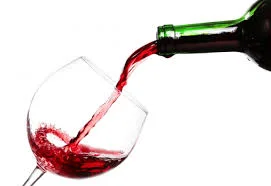Humor: how wine and winemaking influence national elections
Uncorked, published in The East Hampton Star
Voting With Your Wineglass
My post-election analysis of our voting patterns in 2004 has turned up some provocative evidence of the liberalizing influence of wine on politics.
Let’s start with the electoral vote in the powerhouse wine producing states—California, Washington, Oregon and New York. These states produce almost 100 percent of the quantity and all of the best quality wines in this country. Besides creating the wine, they are also big wine consuming states. No surprise, since places where grapes are grown and wine is made develop strong food and wine cultures.
While most of the country was an electoral sweep for President Bush, these four wine indulgent states all went Democratic and produced 104 electoral votes for Senator Kerry. If you look at the electoral map, President Bush carried vast areas of the country. The West, except for the coastal states, most of the Midwest, and the entire South went Republican. Whatever their other merits, these areas hardly get a second look in the wine-producing world.
But it goes beyond the big state blocks of electoral votes. The liberalizing influence of wine even shows up on the grass roots level. Ohio, a swing state that finally was won by Bush with 51 percent compared to Kerry’s 49 percent, produces a fair amount of wine but nothing really noteworthy. Its vineyards are clustered in the northeastern portion of the state near Lake Erie, and grow mostly native grapes such as concord and catawba, or hybrids like seyval blanc. Interestingly, if you look at a detailed breakdown, Kerry won most of the counties in that corner of Ohio, while carrying very few other rural counties in the state.
Virginia has a long history of growing grapes and making wine, including Thomas Jefferson’s mostly unsuccessful attempts at Monticello. It has almost 50 wineries today. It has voted Republican in presidential elections for 40 years. The northern part of the state is considered less conservative, and that is where the Democrats put their campaign money and did well on a county level. It is also where most of the wineries are located. Coincidence? I don’t think so.
While rural and suburban counties across the country went consistently for Bush, Kerry had huge margins in most large cities. The very bon vivant San Francisco, trendy Los Angeles, latte loving Seattle and Portland on the West coast, and the Boston-Washington corridor on the East coast, as well as good restaurant cities like Chicago and New Orleans, all gave margins to Kerry.
I don’t know enough to analyze demographics, but I do know a good wine list, and I am sure I’d have an easier time in Miami or even Minneapolis (Kerry territory) than I would in rural Kansas or a suburb in Nebraska (Bush territory). President Bush is famously a teetotaler. We don’t know Senator Kerry’s tastes, but just judging from his hangouts—Boston, Washington, Nantucket, Sun Valley—I imagine he gets to drink some pretty good vintages.
Is there a conclusive link between wine consumption and political tendencies? I leave that to more sober and scientific minds to determine. But the more I sip the more I think I am right. We all know that wine—especially red wine consumed in moderation—has health benefits. We also know that wine enhances the pleasure of food and company. So why shouldn’t it have other effects? I know people who choose candidates for zanier reasons.
An extra glass of merlot won’t exactly drive you left of the political center, and as far as we know there is no direct cause and effect between drinking red wine and being a communist or an old-fashioned red, or drinking rose and being a pinko. (Forget about the red/blue state shorthand. The wine states were all blue.) There is certainly no need for warning labels on the backs of bottles. Not yet, anyway. So don’t worry too much about wine and politics. Well, at least don’t worry the wine part.





